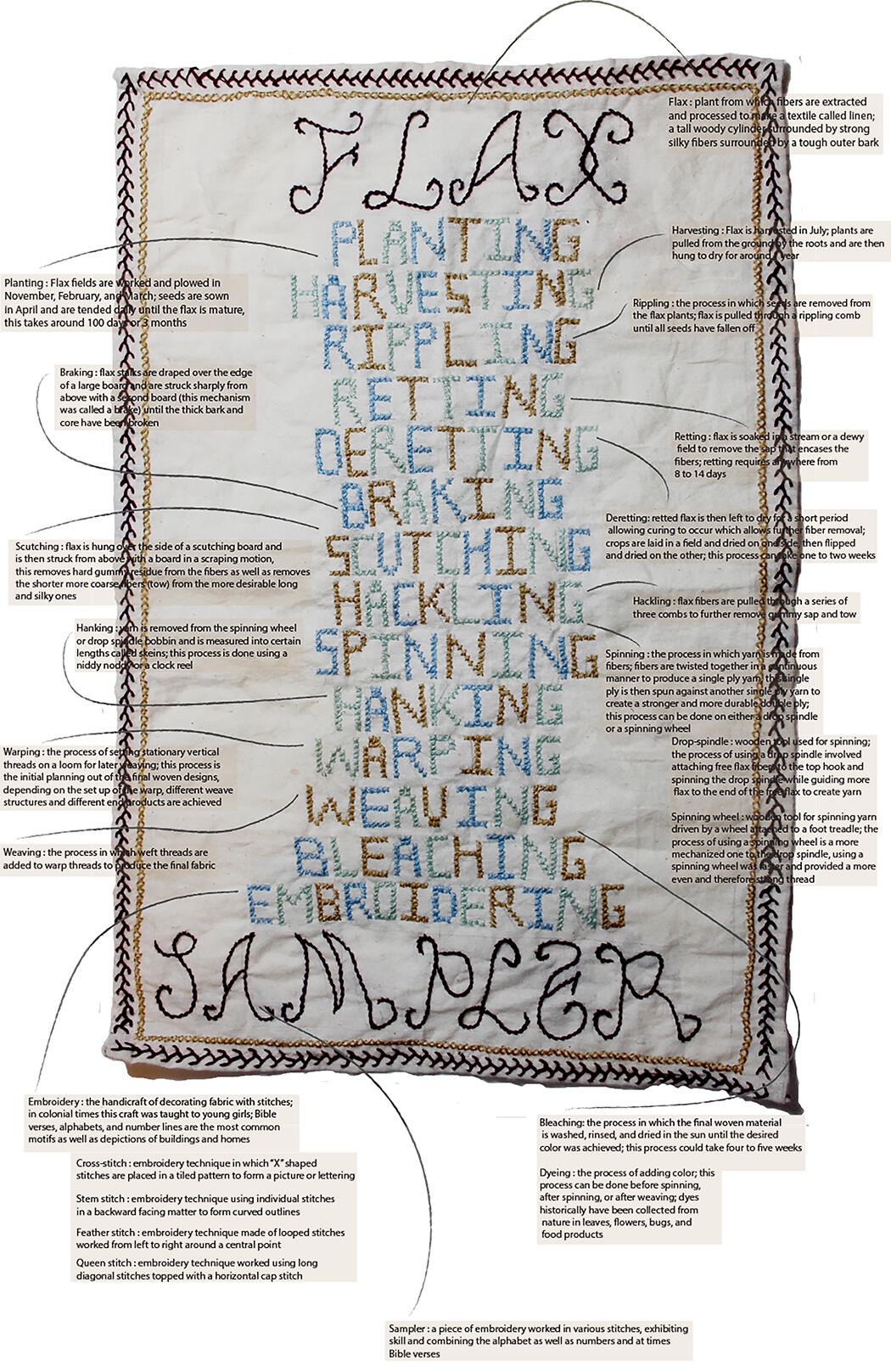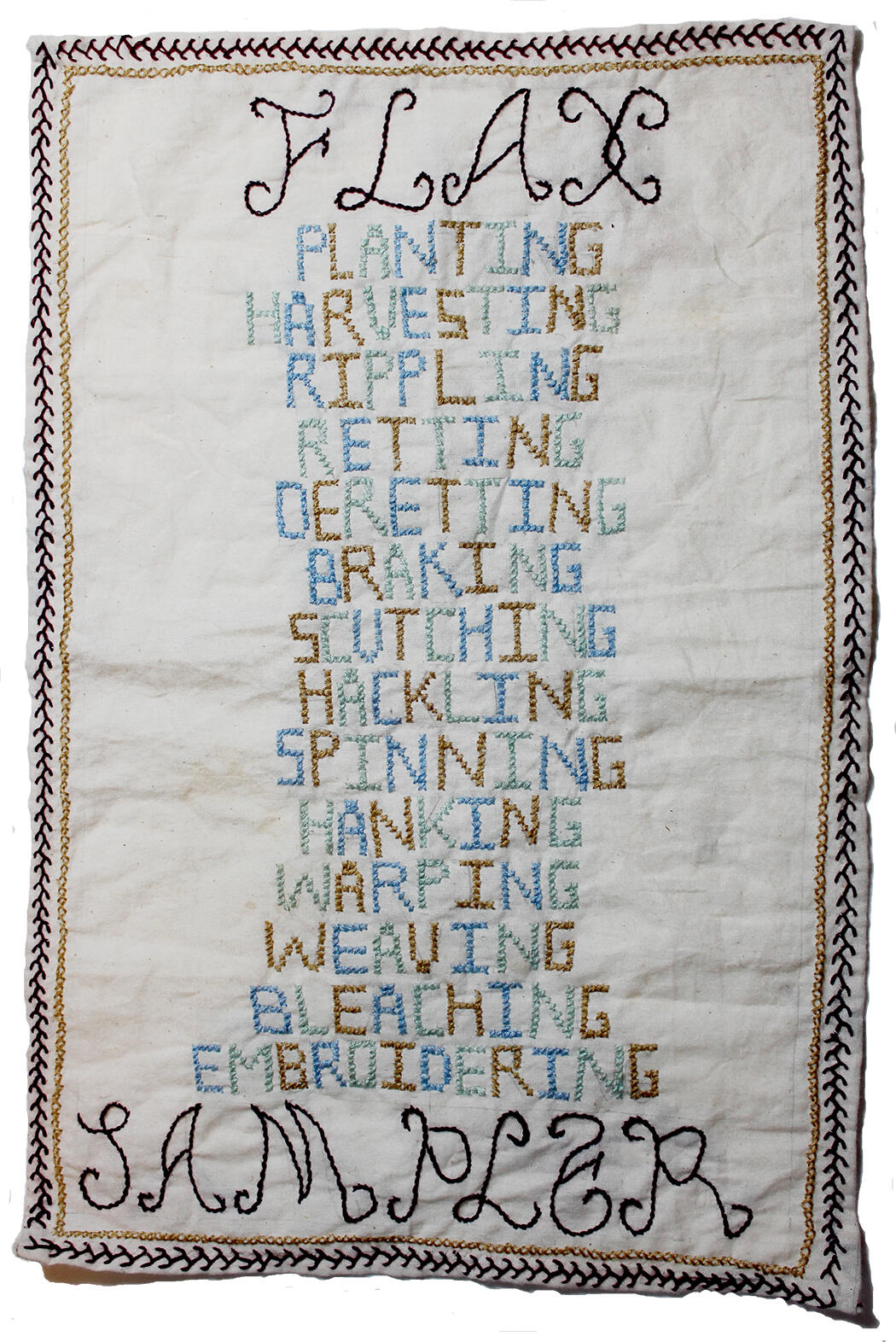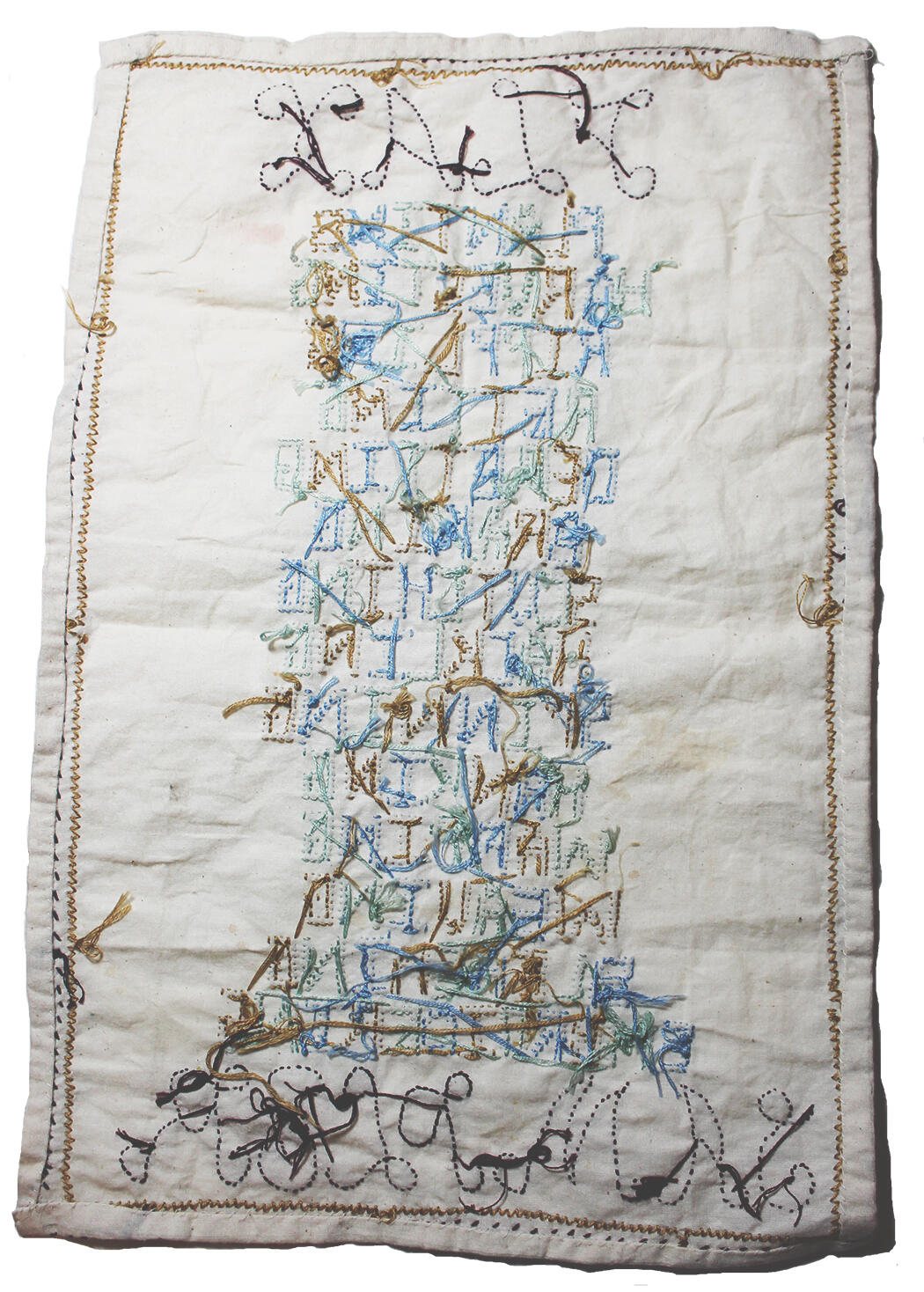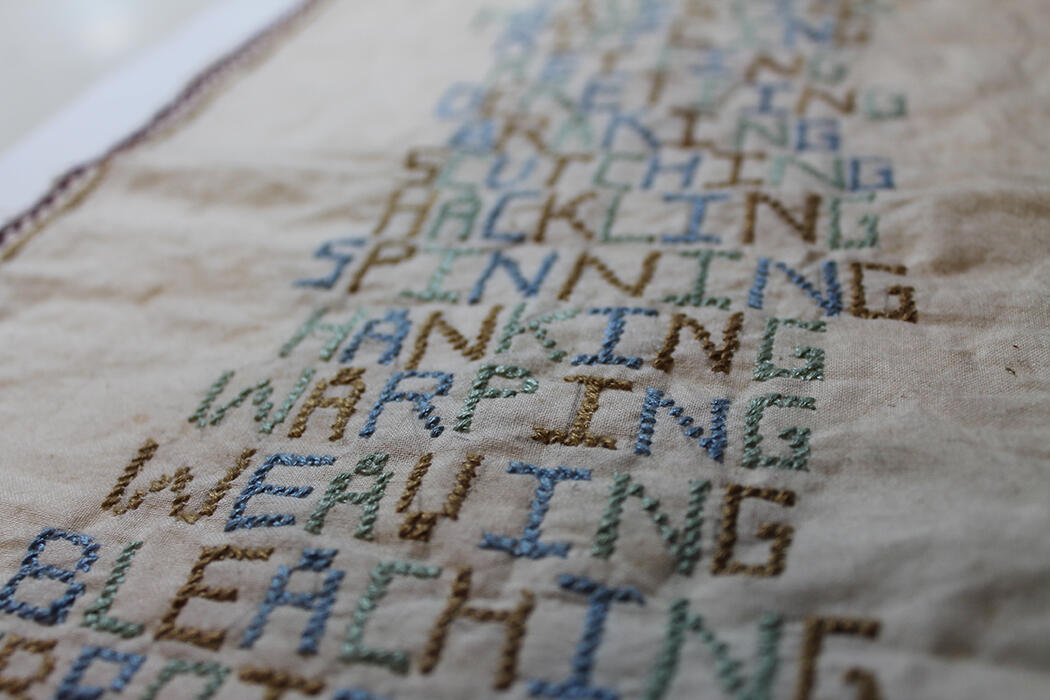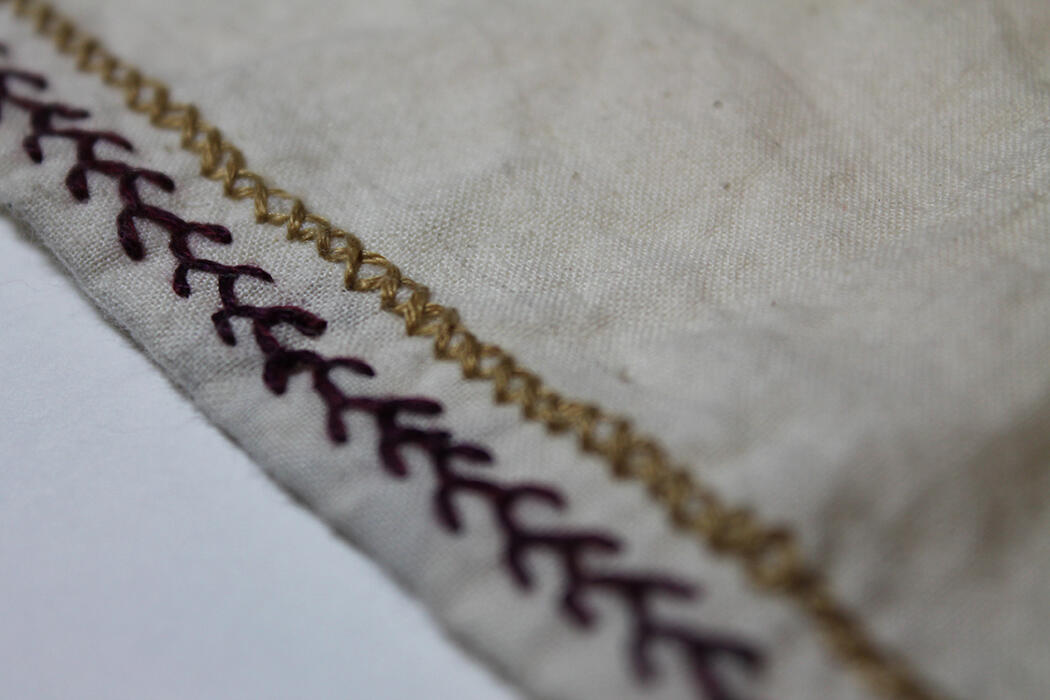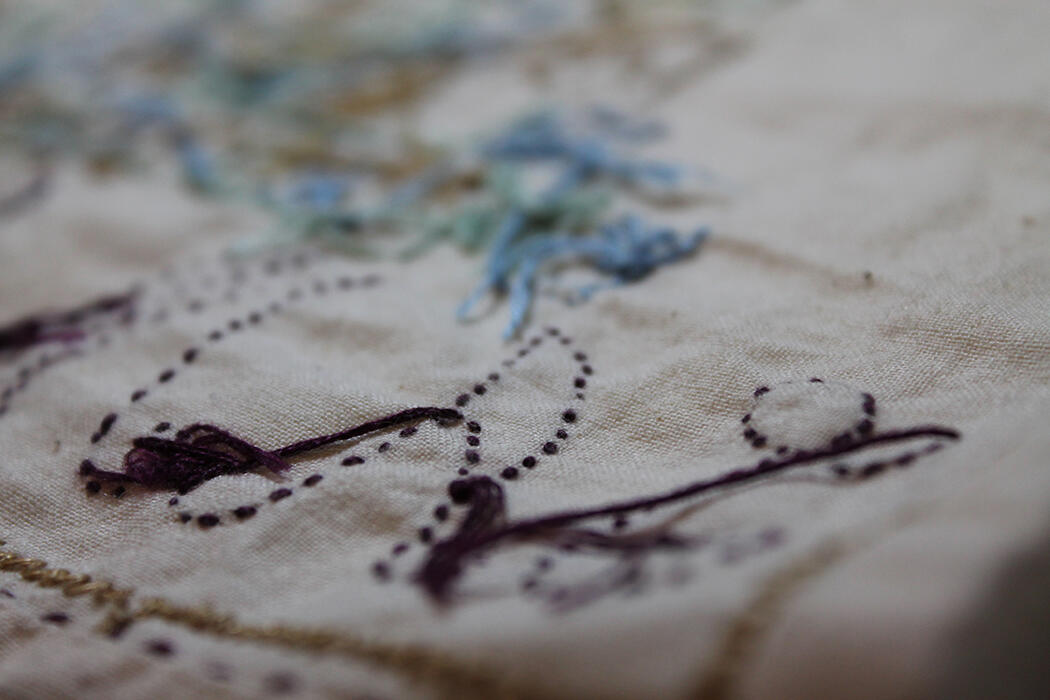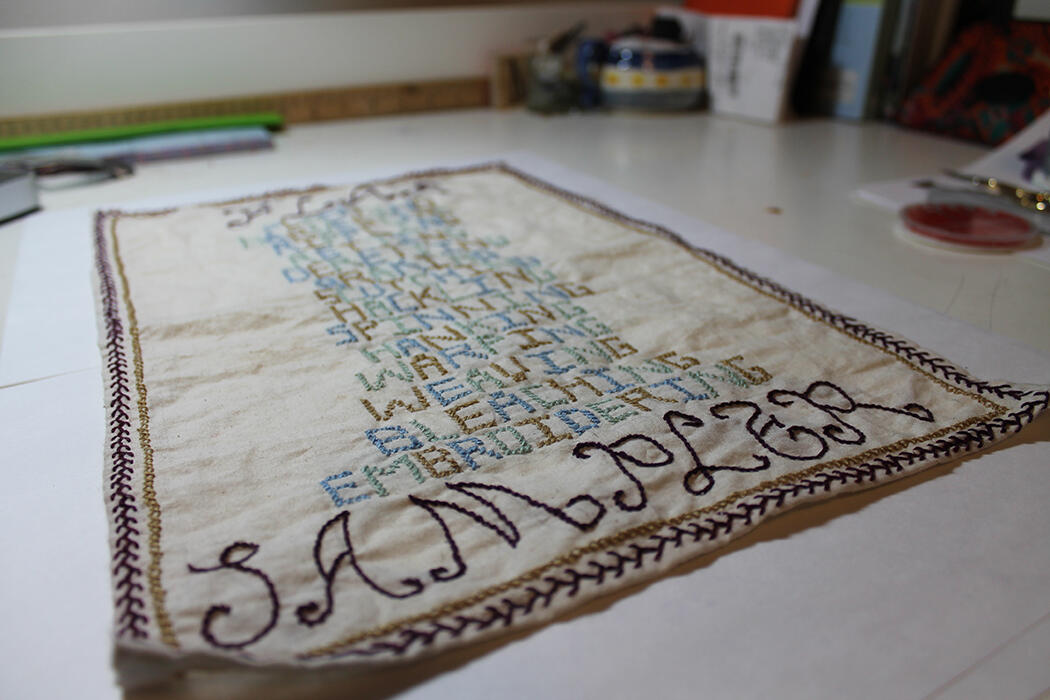Embroidery samplers are inextricably linked to an image of colonial America: farmhouses waved sheets of linen like flags of surrender, with fields of flax extending beyond, as far as the eye could see, in a place where girls as young as seven were set to the task of stitching out alphabets and Bible verses. This is the picture of the age of homespun.
The embroidery samplers in the RISD Museum provide snapshots of many facets of colonial American life. They show aspects of social life, gender dynamics and economic relations (in terms of both imports and exports to various parts of the world), and provide records of travel and imperialization. They show aesthetic values, provide a concrete and accurate record of generations of familial relations, and can encourage discourse on topics of agriculture as well as industrialization.
We can find evidence of each of these and many more areas of enlightenment when we begin to unstitch, unravel, and unwind these samplers to their very fiber. Through process, or more specifically to the combination of many different processes required to design and make a single embroidered sampler, the age of homespun makes itself known.
A sampler begins with a plant known as flax. This plant is grown, harvested, dried, combed, dissolved, beaten, raked, and then spun into yarn that is woven then stitched together with bits of silk. Each of these processes are part of a massive chain of events that are each entitled to their own skill set and knowledge base. In an attempt to deconstruct a sampler’s many social and political implications, we must first dissect each step in this chain, from flax to finish.
THE ANATOMY OF A SAMPLER
Sampler: a piece of embroidery worked in various stitches, exhibiting skill and combining the alphabet as well as numbers and at times Bible verses
Linen ground: fabric onto which embroidery stitching has been applied in early colonial samplers, this was commonly made of hand-spun and hand-woven linen
Flax: plant from which fibers are extracted and processed to make a textile called linen; a tall woody cylinder surrounded by strong silky fibers with a tough outer bark
Planting: Flax fields are plowed in November, February, and March; seeds are sown in April and tended daily until the flax is mature, which takes around 100 days
Harvesting: Flax is harvested in July; plants are pulled from the ground by the roots and hung to dry for about one year
Rippling: the process in which seeds are removed from the dried flax plants; flax is pulled through a rippling comb until all the seeds have fallen off
Retting: flax is soaked in a stream or a dewy field to remove the sap that encases the fibers; retting requires anywhere from 8 to 14 days
Deretting: retted flax is then left to dry for a short period, allowing curing to occur which allows further fiber removal; crops are laid in a field and dried on one side, then flipped and dried on the other in a process can take a total of one to two weeks
Braking: flax stalks are draped over the edge of a large board and struck sharply from above with a second board (a mechanism called a brake) until the thick bark and core have been broken
Scutching: flax is hung over the side of a scutching board and struck from above with a board in a scraping motion to removes the hard gummy residue from the fibers as well as the shorter more coarse fibers (tow) from the more desirable long, silky ones
Hackling: flax fibers are pulled through a series of three combs to further remove sap and tow
Spinning: the process in which yarn is made; fibers are twisted together in a continuous manner to produce a single-ply yarn, which is then spun against another single-ply yarn to create a stronger and more durable double-ply; this process can be done on either a drop spindle or a spinning wheel
Drop spindle: wooden tool used for spinning yarn; the process of using a drop spindle involves attaching free flax fibers to the top hook and spinning the drop spindle while guiding more flax to the end of the free flax
Spinning wheel: wooden tool for spinning yarn, driven by a wheel attached to a foot treadle; the process of using a spinning wheel is a more mechanized one than the drop spindle, spinning faster and providing a more even and therefore stronger thread
Hanking: yarn is removed from the spinning wheel or drop-spindle bobbin and measured into certain lengths called skeins; this process is done using a niddy noddy or a clock reel
Warping: setting stationary vertical threads on a loom for later weaving; this process is the initial planning out of a final woven design; depending on the set-up of the warp, different weave structures and end products are achieved
Weaving: the process in which weft threads are added to warp threads to produce the final fabric
Bleaching: the process in which the final woven material is washed, rinsed, and dried in the sun until the desired color is achieved; this process can take four to five weeks
Dyeing: the process of adding color, done before spinning, after spinning, or after weaving; dyes historically have been collected from nature in leaves, flowers, bugs, and food products
Embroidery : the handicraft of decorating fabric with stitches; in colonial times this craft was taught to young girls, who commonly applied Bible verses, alphabets, and number lines as well as depictions of buildings and homes
Cross-stitch: embroidery technique in which X-shaped stitches are placed in a tiled pattern to form an image or lettering
Stem stitch: embroidery technique using individual stitches in a backward-facing manner to form curved outlines
Feather stitch: embroidery technique in which looped stitches are worked from left to right around a central point Queen stitch: embroidery technique using long diagonal stitches topped with a horizontal cap stitch
Queen stitch: embroidery technique using long diagonal stitches topped with a horizontal cap stitch
McKenzie Everett
RISD BFA 2018, Apparel
